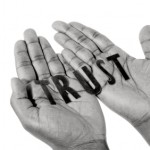Lake Wobegon Syndrome: Believing We’re All Above Average
Garrison Keillor’s fictional Lake Wobegon is that Midwestern enclave where:
…the women are strong, the men are good-looking, and all the children are above average.
Lately, there are curious signs of incipient Wobegonism – at least the part about the kids. On average, we’re all looking just a little too above-average.
Unconditional Positive Self-Regard
I once watched Marshall Goldsmith ask a room of conference participants to lower their heads, then raise their hands if they thought they were in the top 50% of performers in the room. Then, to keep their hands up if they were in the top 25%; then, the top 10%.
When he finally asked people to raise their heads, all could plainly see that over half the room had indicated they were in the top 10%.
The concept of unconditional positive regard is well-known among therapists. There’s something to be said about positive self-regard as well, in the simple sense that if you can’t accept yourself you’re going to have trouble dealing with other people.
But what happens if your sense of self-regard begins to diverge from reality? What happens if you begin to believe you’re All That – and honestly, you’re not?
Reality Bites
Generation Y, famously raised on a sense of entitlement, is having a tough time confronting today’s horrific economic environment. 60% think they have the right to work remotely, with flexible schedules, despite the economy.
Worse, Gen Y’s much-vaunted computer skills may have been overstated; social media savvy doesn’t translate well to spreadsheets, or even to navigating hierarchical menu structures.
Perhaps recognizing an inflection point, the Wellesley High School graduating class recently made news for being told in a commencement speech that “You are not special…you are not exceptional.”
But it’s not just about Gen Y – not by a long shot. Here at Trusted Advisor Associates, we’ve noticed a distinct case of “grade inflation.” Scores on our Trust Quotient (TQ) self-assessment, have been creeping up over the past year or two. There are several possible explanations, including:
- people are becoming more trustworthy,
- people think they are becoming more trustworthy.
I have a sneaking suspicion it’s the latter. Stay tuned.
Overstating our importance is a natural consequence of ignorance. Believing the world is flat was understandable in a world without airplanes or telescopes. But when a modern nation like the US has 46% of its population who believe in creationism, some cognitive dysfunction is afoot.
Politicians bear some blame. The Speaker of the House declares that the US has “the best healthcare system in the world,” which defies logic unless you exclude the other developed economies.
Many pols publicly support the fiction that balancing the national budget is fundamentally the same as balancing a household budget. Any undergrad econ major can tell you the rules of national economies and households are precisely the opposite. It’s hard to tell if this statement lie is cynical, or just grossly ignorant, much less which is worse.
In our social haste to abandon low self-esteem, we have overplayed the power of a positive attitude. We once heard phrases like “you make your own luck,” “smile before you dial,” and, “the glass is half full.” Corporate training once taught that you could act your way into right thinking.
Somehow, those morphed into, “Hold fast to your dream and it will come true,” saying affirmations until they “manifest,” and best sellers like The Secret. We’ve gone way past “thinking your way into right action,” all the way to “envision reality until reality changes to fit our thinking!”
One of the biggest instances of hubris in our time has to be finance. Efficient market theory, the agency theory that led to private equity, and the various financial engineering “innovations” we have seen in recent decades – all are testimony to a belief that we have found revealed (financial) truth. Yet time and again, it seems we have not.
Two Flavors of Humility
There are two kinds of humility. One consists “not in thinking less of ourselves, but in thinking of ourselves less.” The other amounts to, well, thinking less of ourselves – realizing that we’re not, in fact, All That.
We need a little of both.
Thinking of ourselves less drives relationship thinking; it civilizes us, focuses us on other people. It is the root of social behavior, charity, and most of the higher virtues.
Thinking of ourselves less drives other-focus, collaboration, and connection. It enables client focus, allows us to see value adding potential, and creates the basis for reciprocity and customer loyalty.
Thinking less of ourselves is neither sin nor virtue except insofar as our starting point is delusional. Thinking we know it all is a cyclical affectation, a very human failing we are nonetheless good at forgetting.
Until once again things blow up, revert to the mean, and we get our comeuppance, or our karmic smackdown, or our luck runs out. What we call it depends on how much we still believe we understand what just happened.
Here’s what we need a whole lot more of:
“I really am not sure; what do you think?”

 I had a delightful Notting Hill lunch this spring with
I had a delightful Notting Hill lunch this spring with  This post comes from our upcoming book,
This post comes from our upcoming book, 